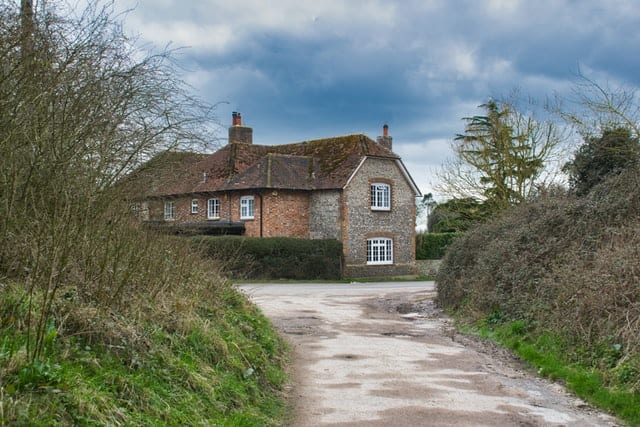
Damp proofing experts
What Causes Rising Damp?
Nobody wants to deal with damp issues in their home, and rising damp is often one of the most serious types of damp to appear. This type of damp will typically appear on the ground floor of your home up to around a metre above the skirting boards, where gravity will prevent it from rising any further. Rising damp can occur in almost any type of wall including brick, stone or concrete block walls. The water is sucked through a small opening through tiny holes in the wall material, which causes the water to travel upwards through the wall. While the damp itself will only typically rise up to a certain level, certain effects of the damp such as salt deposits might be seen higher.
What are the Signs of Rising Damp?
One of the main signs of rising damp in your home is a ‘tide line’ of brown plaster or yellow staining that appears in the lower area of the room above the skirting boards. This will only appear in ground floor rooms, so if you’re seeing it in an upper floor in your home, it’s more likely to be a different type of damp such as condensation or penetrating damp. Another tell-tale sign that what you are dealing with is rising damp is skirting boards that are damp to the touch or showing signs of rotting. You may also see white, fluffy deposits in the plaster of your wall, which are caused by salts that have been washed out of the bricks by the damp and into the plaster. Depending on how long the damp issue has persisted for, you may also notice black spots on the wall caused by mould.
What Does a Damp Proof Course Do?
Your home’s damp proof course is a mandatory requirement for all homes in the UK built after the early 1900s. It is a water-resistant barrier running along the length and width of all the walls in your home to prevent water from the ground getting inside and causing rising damp. According to building standards and regulations, the damp proof course should be installed at around six inches from ground level. There are a range of damp proof course types available. Plastic damp proof courses are the most commonly used option in new home construction, while chemical damp proofing treatments tend to be the most popular option for replacing a damp proof course in an existing home. Some other damp proof course types include osmotic water repellence which involves embedding wires in the wall, and pore blocking salt mortar, which is a cement-based mortar injected into stone walls for damp-proofing.
Why It’s Important to Call Rising Damp Experts
It’s important to act quickly if you believe that you have noticed the signs of rising damp in your home. Rising damp is often an indication of bigger problems with the damp proof course, a waterproof layer that is designed to stop moisture from the outside from reaching the inside of your home. A rising damp expert will be able to help you determine if the problem that you are dealing with is in fact rising damp, and the problem with the damp proof course that has led to it. In some cases, it may simply be that something has bridged the damp proof course, providing an option for water to travel over it. Removing the bridge will usually fix this issue quickly. However, in the case where there is no bridge, it might indicate that the damp proof course has failed completely and will need repairing or replacing.
Ask a Damp Expert – Why Does Rising Damp Occur?
Issues with rising damp in the home are almost always indicative of a problem with your damp proof course. Whether this is because the walls have no damp proof course present or the damp proof has been bridged or failed to work effectively, rising damp will usually always occur as a result. The damp proof course is a water repelling barrier that is installed in the walls of your home, located at around six inches up from the ground level on the exterior of the property. It is designed to repel water, preventing damp from developing in the internal walls of your home.
Bridging the damp proof course is one of the most common reasons for rising damp in the home. A bridged or breached damp proof course occurs whenever there is something attached or close to your walls that has allowed the water to get around the damp proof course. For example, an area of ground next to the property that is higher than the damp proof course might cause this to happen. Debris that has reached above the level of the damp proof course can also provide a bridge for moisture to travel over it. Thankfully, removing the bridge will usually rectify this problem immediately as long as the damp proof course itself is working effectively and in good repair.
Why Hire a Damp Specialist?
Since rising damp is one of the most commonly misdiagnosed types of damp in the home, it’s always worth hiring a damp specialist who can help you be sure that this is the type of damp that you are dealing with. In some cases, penetrating damp that has occurred in the lower parts of the property could be mistaken for rising damp. Since the damp proof course is purely for preventing rising damp and will have no effect on the prevention of penetrating damp, replacing it could be a very expensive way of finding out that you are not dealing with rising damp at all. Condensation damp could also appear on the lower parts of the wall since they are often the coldest part of the wall and therefore attract more hot air.
A damp proof specialist will be able to visit your home and determine the cause of the damp and whether or not you are actually dealing with rising damp. They can then inspect your damp proof course to ensure that it is present, along with checking for any signs of failure or bridging. You may be able to check yourself to see if your damp proof course is present since it will usually be visible outside your property as a line that will be located around six inches above the ground level. Your damp proof specialist can also double check that you are not experiencing issues due to a neighbouring property having a damp proof course that is installed higher up than yours, which can bridge your damp proof course even if it is working correctly otherwise.
How Do Damp Proofing Experts Treat Rising Damp?
As with any damp problem that you might find in your home, the best way to deal with rising damp is to first get to the root cause of the problem and ensure that this has been dealt with before you deal with the effects of the damp. While you can hide the damp by repairing the walls and treating with a suitable damp treatment, this is unlikely to last for long if the root cause of the issue has not been addressed. Over time, the damp will only get worse and begin to reappear in your home, which can lead to more work for you and a lot more damage.
The treatments available for rising damp will depend on what has caused it. In the case of a damp proof course that has been bridged, removing whatever is creating the bridge will usually be sufficient for treating the root cause of the damp and problems are unlikely to reoccur if you go ahead and treat the damp effects in the home. Blockages in the cavity wall that have led to a bridge of the damp proof course will need to be removed to prevent the problem from getting worse in the future.
Perhaps one of the most serious reasons for rising damp in the home is where the damp proof course has failed and is no longer working effectively to prevent moisture from getting in the home. This should be rectified as soon as possible since the problem is only going to get much worse over time, as there is no longer anything stopping moisture from getting into your property at the ground level. In this case, you may need to completely replace the damp proof course in your home. The best way to do this is with chemical damp proofing, which is a silicone-based substance that is injected into the wall through holes that are drilled into the mortar. You can hire a professional to do this for you, or DIY kits are available for those who would prefer to tackle the job themselves.
Any type of damp in the home can be serious, but rising damp is often indicative of a much more serious issue with the damp proof course, which is a key component of any home in the UK. If you have spotted signs of damp that you believe to be rising damp in your home, the best thing to do is contact a specialist who can help.
